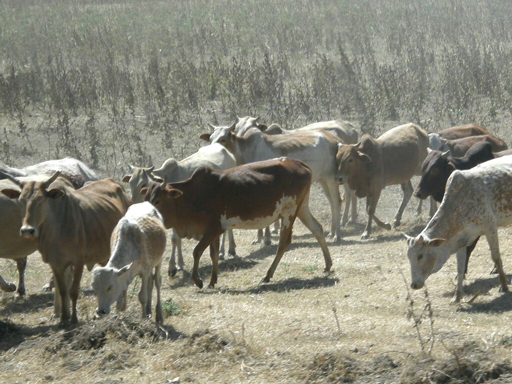9.3.3 How are greenhouse gases generated?
Human civilisation is highly dependent for its sources of energy on burning fossil fuels such as coal, oil and natural gas. Fossil fuels are formed over millions of years from the decayed remains of living organisms buried underground. The burning of fossil fuels, wood and compressed animal dung generates large amounts of carbon dioxide (CO2), one of the major greenhouse gases. Carbon dioxide remains in the atmosphere for many years and causes the Earth’s surface temperature to rise as a result of the greenhouse effect. Figure 9.7 shows that the concentration of atmospheric CO2 increased from 280 ppm in 1958, to more than 380 ppm in 2010 (IPCC, 2013).

There are natural processes on Earth that, to some extent, balance the generation of carbon dioxide. For example, all green plants remove CO2 from the atmosphere in the process of photosynthesis. Plants, especially forests, oceans and wetlands are all important carbon sinks. Carbon sink is the term used to describe natural systems that absorb and store carbon dioxide from the atmosphere. However, as Figure 9.7 shows these balancing processes are not able to keep up with the rate of CO2 generation.
Another important greenhouse gas is methane (CH4), which is increasing in the atmosphere as a result of two main aspects of human activity: the decomposition of organic solid waste, and livestock farming. The digestive processes of ruminant animals such as cows (Figure 9.8), sheep and goats produce and release large amounts of methane gas (USEPA, n.d.; NASA, n.d.).

Nitrous oxide (N2O) is another major greenhouse gas. It is generated from human activities such as burning organic materials, vehicle exhaust emissions and the production and use of organic fertilisers (USEPA, n.d.; NASA, n.d.). The concentration of N2O in the atmosphere has increased from the pre-industrial level of 270 parts per billion (ppb) to about 324 ppb in 2011 (IPCC, 2013).
Now that you know about the pattern of climate change at a global level and how it is affected by human activities, we can turn our attention to the effects in Ethiopia in the final section of this study session.
9.3.2 How do greenhouse gases contribute to climate change?
